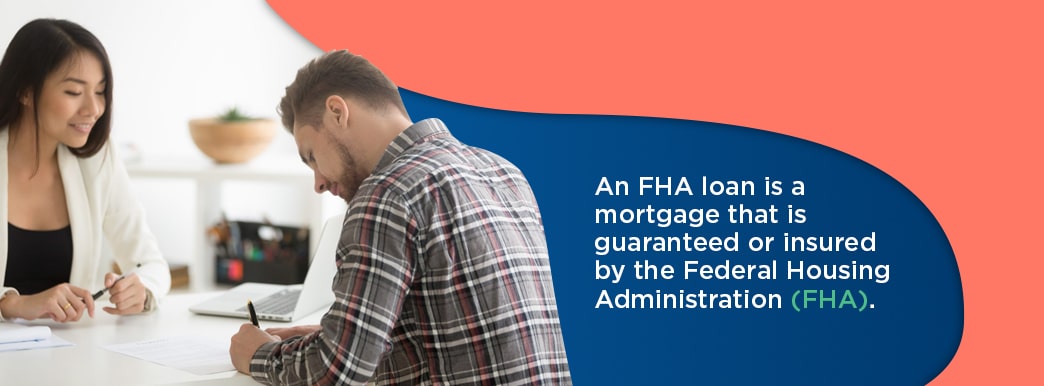You purchased your home a few years ago and have been enjoying living in it for a while now. After making payments on your home’s FHA loan for some time, you’re starting to wonder, “Can I refinance from an FHA to a conventional loan and get a better interest rate, lower monthly payments or a combination of the two?” In 2020, repeat refinances accounted for 10.1% of all refinances. In some of those cases, people who had initially taken out an FHA mortgage decided to switch to a conventional loan.
While FHA loans have their benefits, they can end up costing a homeowner more over the long run. Learn more about the difference between an FHA loan and a conventional mortgage, and see if it’s time for you to refinance an FHA loan to a conventional one.
Table of Contents
- Difference Between FHA and Conventional Loans
- What is an FHA Loan?
- How do FHA Loans Work?
- What is a Conventional Loan?
- Understand what Separates an FHA and a Conventional Loan
- Pros and Cons of Refinancing
- When You Shouldn’t Refinance Your FHA Loan
- Process of Refining an FHA Loan to a Conventional Loan
- Refinance with Us Today
What Is the Difference Between an FHA Loan and a Conventional Loan?
For many buyers, getting an FHA loan makes sense. These loans are designed to help people buy homes by removing some of the typical barriers to homeownership, such as the need to have a significant down payment and an excellent credit score.
There’s a common assumption that FHA loans are only for first-time buyers and that conventional loans are for people who have experience purchasing a property. The reality is that both first-time and repeat buyers can obtain either an FHA loan or a conventional loan. Learn more about the differences between the two types of mortgages.
What Is an FHA loan?
An FHA loan is a mortgage that is guaranteed or insured by the Federal Housing Administration (FHA). The program began in the mid-1930s, and since then, the FHA has insured more than 40 million mortgages.
One common misconception about FHA mortgages is that they come from the government itself. While the FHA acts as the guarantor on the loans, private banks and lenders issue the mortgages themselves. As long as the government approves the lender you’re considering, you can get an FHA loan.
Buyers who apply for an FHA loan may have the option of putting down as little as 3.5% when they buy their home. They may also be allowed to have a lower credit score compared to people applying for conventional loans. FHA loans offer the option of choosing a fixed-rate mortgage or an adjustable-rate loan. Borrowers may also choose from a variety of loan terms, such as 15 or 30 years.
How Do FHA Loans Work?
While the federal government doesn’t make FHA loans, it does insure them. That means if a borrower has trouble making mortgage payments and falls behind, the lender can file a claim with the FHA. After the lender forecloses on the buyer’s home, the FHA pays the lender the loan’s balance. Since lenders know they are likely to get paid no matter what, they are more willing to lend money to people who would otherwise be considered too risky for a home loan.
The FHA’s guarantee does come at a cost, though, and it’s usually the borrower who pays the price. FHA loans typically have two forms of mortgage insurance. The first is an upfront mortgage insurance premium payment typically around 1.75% of the loan’s principal amount. You pay this amount at closing.
The second form of mortgage insurance is a monthly insurance payment, which can be anywhere from 0.45% to 1.25% of the initial principal. The monthly insurance payment usually remains for the life of the loan and can add several hundred dollars to a person’s monthly mortgage payment.
What Is a Conventional Loan?
A conventional loan is a mortgage that is not guaranteed by a federal agency such as the FHA. Since conventional loans don’t offer lenders the guarantee that the loan will get paid, they often have stricter requirements compared to FHA loans. Despite that fact, the majority of home buyers use conventional loans to purchase a home. In 2020, 69% of new houses sold using a conventional loan as the source of financing.
Usually, if a person is interested in applying for a conventional loan, they need to make a down payment of at least 3% and have a credit score of at least 620. The more a person can put down, the better the terms of the mortgage. The higher a person’s credit is, the lower the interest rate. While you can get a conventional loan with a lower credit score, many lenders offer the best rates to people with scores in the 700s.
You might have heard the traditional advice to put down at least 20% of the value of the home when you apply for a conventional mortgage. Generally, making a down payment of at least 20% eliminates the need to pay private mortgage insurance each month.
If a buyer puts down less than 20%, they are usually responsible for paying a private mortgage insurance premium every month. The amount of the premium can vary based on the value of the home compared to the amount of the loan and a person’s credit score. Once the loan-to-value ratio on a mortgage has reached 80%, you can ask the lender to remove the mortgage insurance. The lender should remove mortgage insurance automatically once your loan-to-value ratio reaches 78%.
Understand What Separates an FHA and a Conventional Loan
There are some notable differences between an FHA loan and a conventional mortgage. The list below should help you compare the differences at a glance.
1. Credit Score
Your credit score will influence which type of loan you are eligible to receive. Your credit score should be:
- FHA: As low as 500 with a 10% down payment, and 580 for a 3.5% down payment.
- Conventional: Your credit score should be at least 620 to apply for a conventional mortgage. The higher your score, the lower your interest rates, and the better your loan terms.
2. Down Payment Requirements
You will only be able to secure a loan if you meet the down payment requirement, which is:
- FHA: At least 3.5%, usually between 3.5% and 5%. People with credit scores between 500 and 579 need to put 10% down.
- Conventional: The required down payment for a conventional loan is at least 3%, but it varies based on the lender. Putting down 20% eliminates the need to pay private mortgage insurance.
3. Mortgage Insurance Payments
For mortgage insurance, you can expect to pay:
- FHA: There are two insurance types required — an upfront mortgage insurance premium of 1.75%, then a monthly mortgage insurance premium (MIP). The MIP is typically for the life of the loan, even once the loan-to-value ratio is 80%.
- Conventional: Private mortgage insurance premiums are usually required when the down payment is less than 20%. Once the value of the loan is 80% of the value of the house, you can ask the lender to remove the premium.
4. Loan Limits
Loan limits will depend upon what kind of loan you have. Limits include:
- FHA: Loan limits vary widely based on the area of the country, but they were usually around $331,760 in 2020.
- Conventional: Loan limits for a conforming conventional mortgage vary based on location. The ceiling limit for a single-family home was increased to $548,250 in 2021 in some areas. Limits are higher in areas with a higher cost of living. Borrowers also have the option of applying for a jumbo or non-conforming loan if they want to buy a particularly expensive house.
5. Closing Costs and Down Payment Assistance
When you need payment assistance, you can expect:
- FHA: The seller can contribute up to 6% of the closing costs with an FHA loan. The borrower can also get down payment assistance of up to 100% with an FHA loan, which means a family member or other source can give them the money for the down payment.
- Conventional: The seller can usually contribute up to 3% of the closing costs on a conventional loan.
Pros and Cons of Refinancing an FHA Loan to a Conventional Loan
If you have an FHA loan and are considering refinancing to a conventional loan, it’s helpful to weigh the pros and cons of refinancing to see if it’s the right choice for you. Take a look at a few benefits and drawbacks of refinancing from an FHA to a conventional loan.
Pro: Reducing or Eliminating Mortgage Insurance
With an FHA loan, the MIP is for the life of the loan, provided you put down less than 10% at the start. That means you’ll still have to pay premiums on your mortgage even after the value of the loan reaches 80% of the value of the house. Those extra insurance premiums can add to your costs.
When you refinance to a conventional loan, you can either eliminate mortgage insurance premiums, if the loan-to-value ratio is at least 80%. You might also reduce them and introduce the possibility of removing them in the future.
Pro: Increase the Size of Your Loan
The Federal Housing Finance Agency actually raised the maximum loan limit to $548,250 for single-family residences in 2021. In the fourth quarter of 2020, 38% of all refinances resulted in a loan that was at least 5% higher than the unpaid principal balance on the existing loan. Taking out a bigger loan when you refinance allows you to pay for renovations or improvements to the house. Some people also use the more substantial loan amount to pay down other debts and consolidate their loans.
Pro: Reduce or Change Interest Rate
Refinancing an FHA loan to a conventional mortgage may allow you to get a lower interest rate. If your original loan had an adjustable rate, you have the option of refinancing to a loan with a fixed rate. You also have the option of refinancing from a fixed-rate loan to an adjustable-rate mortgage, if that is more appealing to you.
Pro: Reduce Your Monthly Payment
Depending on the amount of your new loan and the term of the loan, you might get a lower monthly payment after refinancing. For instance, if you refinance from a 15-year term to a 30-year term, your monthly payment will drop. Eliminating mortgage insurance premiums after refinancing will also help you reduce your monthly mortgage payment.
Con: You Have to Pay Closing Costs Again
One drawback of refinancing is that it does require you to take out a new loan and go through the mortgage process all over again. That means you’ll have to pay closing costs when you refinance. For some borrowers, the closing costs can eat into any savings they would get from a lower interest rate or the elimination of mortgage insurance.
Con: There’s a Lot of Paperwork
Remember when you applied for your first mortgage, and you had to provide proof of income, employment, assets, and so on? With most companies, you’ll need to do that all over again when you refinance. That process is shorter using the technology at Assurance Financial because you can simply log in to your online accounts to access and upload your asset information.
APPLY TODAY
When You Shouldn’t Refinance Your FHA Loan
The goal when refinancing is usually to save money in the long run. You can save money on your home loan by lowering your interest rate or reducing mortgage insurance, or both. That said, there are instances when refinancing won’t save you money and might not be worth doing. For example, if the cost of closing on the new loan is more than the amount you’ll save, you might want to skip refinancing.
It’s also worth considering how long you’ll be living in your home. If you are considering moving in a few years or don’t see yourself staying in your home long-term, you might be better off not refinancing. Once you sell your current home, you can use the proceeds from the sale to pay off the remaining principal and to put a down payment on your next home.
Finally, if you’re 13 years into a 15-year mortgage or 25 years into a 30-year loan, it usually makes sense to keep your current loan and not refinance. You’re likely to save more money if you refinance early in the life of your home loan, rather than later.
[download_section]
Process of Refinancing an FHA Loan to a Conventional Loan
If you’ve decided that to refinance your FHA loan to a conventional loan, here’s what you can expect during the process.
- Check your credit: Conventional loans require a higher credit score than FHA loans, so it’s a good idea to make sure your score is high enough to help you qualify. Contact a lender to help you find out.
- Get an idea of your home’s value: An appraisal is part of the refinancing process. Checking out your home’s value before you begin will help you see if you have enough equity built up to refinance. A Realtor may be able to give you a good idea.
- Contact a lender: Reach out to a lender to learn more about the rates they offer and the type of service they provide.
- Make sure you have enough cash: You’ll need cash to cover closing costs and other fees associated with refinancing. Your lender can help you get an idea of how much you’ll need.
- Gather your paperwork: You’ll need pay stubs or proof of income, tax returns, bank and investment statements, and plenty of other documents to complete the refinance. Your lender will give you a list of all the paperwork you’ll need.
- Schedule the appraisal: An independent appraiser will visit your home and assess its market value.
- Go to closing: Closing on a refinance is going to be similar to closing on your first mortgage. Be ready to sign documents and hand over the cash for closing costs.
Refinance Your FHA Loan With Assurance Financial
If you’re tired of paying mortgage insurance or are looking to get a lower interest rate, today could be the day that you start the refinancing process. Use our refinance calculator to see if refinancing from an FHA to a conventional loan will help you save money. If you’re ready to start the refinancing process, contact us today to find a loan officer near you.
Sources:
- http://www.freddiemac.com/research/insight/20210305_refinance_trends.page
- https://staging.assurancemortgage.com/fha-loans/
- https://staging.assurancemortgage.com/first-time-home-buyer-loans/
- https://staging.assurancemortgage.com/conventional-loans/
- https://www.hud.gov/program_offices/housing/rmra/oe/rpts/fhamktsh/fhamktqtrly
- https://www.pennymac.com/blog/lower-your-mortgage-payments-by-refinancing-from-an-fha-to-a-conventional-loan
- https://www.census.gov/construction/chars/highlights.html
- https://entp.hud.gov/idapp/html/hicostlook.cfm
- https://www.fhfa.gov/DataTools/Tools/Pages/Conforming-Loan-Limits-Map.aspx
- https://staging.assurancemortgage.com/refinance-your-home/
- https://www.fhfa.gov/Media/PublicAffairs/Pages/FHFA-Announces-Conforming-Loan-Limits-for-2021.aspx
- https://staging.assurancemortgage.com/calculators/should-i-refinance-my-mortgage/
- https://www.fhfa.gov/DataTools/Tools/Pages/Conforming-Loan-Limits-Map.aspx
- https://staging.assurancemortgage.com/find-a-loan-officer/




